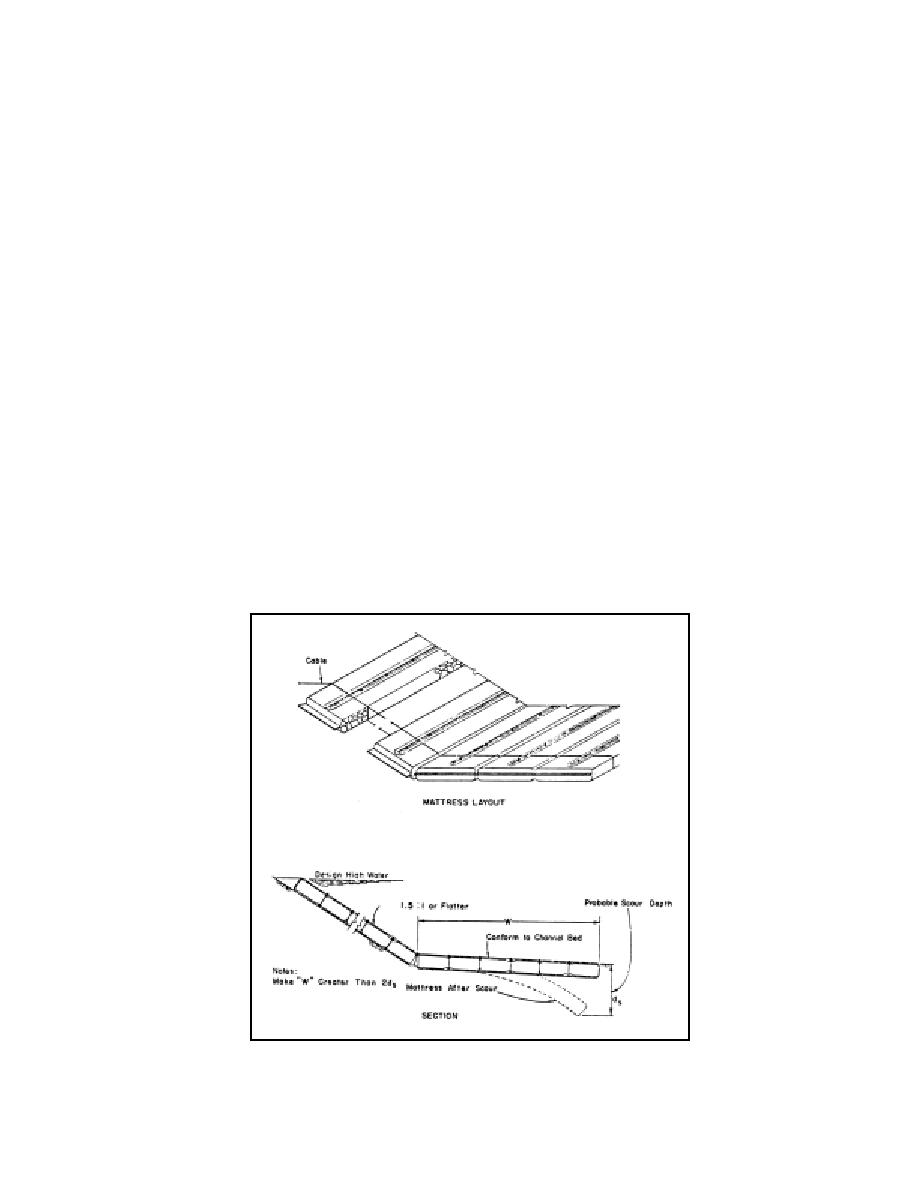
associated with stream bank stabilization relative to channel restoration and rehabilitation
projects, it is also generally applicable to bank stabilization associated with bridge crossings.
HEC-23 (Lagasse et al. 2001) provides an overview of bioengineering approaches, a
summary of design considerations, and reference to recent reports, studies, and handbooks
containing design guidelines.
6.6.3 Rock-and-Wire Mattresses
When adequate riprap sizes are not available, rocks of cobble sizes may be placed in wire
mesh mats made of galvanized fencing and placed along the bank forming a mattress. HEC-
23 (Lagasse et al. 2001) contains specifications developed by the New Mexico State Highway
and Transportation Department for wire enclosed riprap mattress. The individual wire units are
called baskets if the thickness is greater than 300 mm (12 in.). The term mattress implies a
thickness no greater than 300 mm (12 in.). Toe protection is offered by either extending the
mattresses on to the channel bed as shown in Figure 6.20 or embedding the mattress to some
predetermined scour depth. As the bed along the toe is scoured, the extended mattress drops
into the scour hole. Special wire baskets and mattresses are manufactured and sold
throughout the United States. It should be noted that when rock-and-wire mattresses are used
in streams transporting cobble and rocks, the wires of the basket can be cut by abrasion rather
rapidly, which will destroy the intended protection along the base of the bank. Corrosion of the
wire mesh and vandalism may also be a problem.
Mattresses and baskets can be made up in large sizes in the field. These are flexible and can
conform to scour holes which threaten the stability of the banks. They should be linked
together to prevent separation as subsidence takes place.
Figure 6.20. Rock and wire mattress.
6.38



 Previous Page
Previous Page
